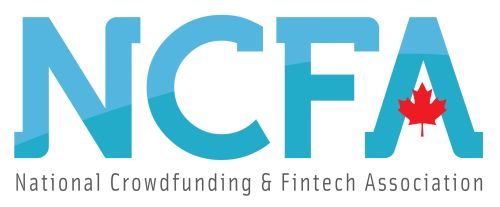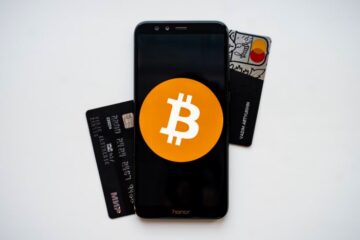Putting it Into Perspective: Buy Now, Pay Later and Consumer Debt
CATO Institute | Nicholas Anthony | Feb 17, 2023

Image: Pexels/Ivan Samkov
Some people have been wondering how the philosophy of “buy now, pay later” might fit into the story of household debt being currently at record highs
- Last fall, Senator Mark Warner (D‑VA) likened the rise of buy now, pay later (and other fintech) services to the lead‐up to the financial crisis. However, when considered alongside the data that is available, it appears clear that there is no such risk.
- Current consumer debt landscape: First, let’s consider the current landscape. The Federal Reserve reported that housing debt and non‐housing debt in the fourth quarter of 2022 reached $12.26 trillion and $4.64 trillion, respectively.
- When broken down further, it becomes clear this debt is primarily concentrated within mortgages (71 percent of all consumer debt), student loans (9 percent), and auto loans (9 percent).
- While credit card debt made up just 6% of the total share of consumer debt, it is notable that credit card debt alone increased 20% since this time last year.
See: UK Publishes Draft Legislation to Regulate BNPL Credit
- BNPL debt was just 0.04% of consumer debt in 2021: The Consumer Financial Protection Bureau (CFPB) reported the five largest buy now, pay later companies had facilitated $24.2 billion in spending in 2021.
- While it’s possible some of this spending was linked to credit cards, let’s assume for simplicity that this represents an isolated layer of debt. Under that assumption, if we compare these numbers with the Federal Reserve’s reports, it becomes abundantly clear how small the industry still is: buy now, pay later would have accounted for just 0.04% of consumer debt in 2021
- For additional context, the Federal Reserve reports there are 500 million open credit accounts, and 191 million Americans have at least one credit card. In fact, that same Federal Reserve report found that 43 million Americans have five or more cards. In contrast, it’s estimated that only 93 million Americans used buy now, pay later in 2022.
- Conclusion: Companies working in this space can certainly help their industry to be better understood during this evolution by being transparent and providing accessible data. However, that is not to say the government should step in to force this transparency. Considering the data available already shows there is little to be concerned about in terms of rising debt, using legislative or regulatory force to mandate disclosures from buy now, pay later companies does not seem justified.
Continue to the full article –> here
 The National Crowdfunding & Fintech Association (NCFA Canada) is a financial innovation ecosystem that provides education, market intelligence, industry stewardship, networking and funding opportunities and services to thousands of community members and works closely with industry, government, partners and affiliates to create a vibrant and innovative fintech and funding industry in Canada. Decentralized and distributed, NCFA is engaged with global stakeholders and helps incubate projects and investment in fintech, alternative finance, crowdfunding, peer-to-peer finance, payments, digital assets and tokens, blockchain, cryptocurrency, regtech, and insurtech sectors. Join Canada’s Fintech & Funding Community today FREE! Or become a contributing member and get perks. For more information, please visit: www.ncfacanada.org
The National Crowdfunding & Fintech Association (NCFA Canada) is a financial innovation ecosystem that provides education, market intelligence, industry stewardship, networking and funding opportunities and services to thousands of community members and works closely with industry, government, partners and affiliates to create a vibrant and innovative fintech and funding industry in Canada. Decentralized and distributed, NCFA is engaged with global stakeholders and helps incubate projects and investment in fintech, alternative finance, crowdfunding, peer-to-peer finance, payments, digital assets and tokens, blockchain, cryptocurrency, regtech, and insurtech sectors. Join Canada’s Fintech & Funding Community today FREE! Or become a contributing member and get perks. For more information, please visit: www.ncfacanada.org
Related Posts
- SEO Powered Content & PR Distribution. Get Amplified Today.
- Platoblockchain. Web3 Metaverse Intelligence. Knowledge Amplified. Access Here.
- Source: https://ncfacanada.org/putting-it-into-perspective-buy-now-pay-later-and-consumer-debt/
- 2018
- 2021
- 2022
- 9
- a
- About
- accessible
- Accounts
- Additional
- affiliates
- All
- alone
- alongside
- already
- alternative
- Americans
- and
- Anthony
- article
- Assets
- assumption
- auto
- available
- Banking
- become
- becomes
- being
- Better
- Billion
- blockchain
- BNPL
- Broken
- Bureau
- buy
- cache
- Canada
- card
- Cards
- certainly
- CFPB
- clear
- closely
- community
- Companies
- compare
- Concentrated
- concerned
- Consider
- considered
- consumer
- Consumer Financial Protection Bureau
- contrast
- create
- credit
- credit card
- Credit Cards
- crisis
- Crowdfunding
- cryptocurrency
- Current
- Currently
- data
- Debt
- decentralized
- digital
- Digital Assets
- Disclosures
- distributed
- down
- draft
- during
- ecosystem
- Education
- engaged
- entry
- estimated
- Ether (ETH)
- evolution
- facilitated
- Fall
- Federal
- federal reserve
- Federal Reserve’s
- finance
- financial
- financial crisis
- fintech
- First
- fit
- Force
- found
- Fourth
- from
- full
- funding
- further
- get
- Global
- Government
- help
- helps
- household
- housing
- How
- However
- HTTPS
- in
- increased
- industry
- information
- Innovation
- innovative
- Insurtech
- Intelligence
- investment
- isolated
- IT
- Jan
- landscape
- largest
- Last
- Last Year
- layer
- Legislation
- Legislative
- linked
- little
- Loans
- made
- mandate
- mark
- Market
- max-width
- member
- Members
- might
- million
- Mobile
- Mobile Payment
- more
- networking
- notable
- numbers
- ONE
- open
- opportunities
- Other
- partners
- Pay
- payment
- payments
- peer to peer
- People
- percent
- perks
- perspective
- philosophy
- plato
- Plato Data Intelligence
- PlatoData
- please
- possible
- primarily
- projects
- protection
- provides
- providing
- Publishes
- Putting
- Quarter
- reached
- record
- Regtech
- Regulate
- regulatory
- Reported
- Reports
- represents
- Reserve
- reserves
- Rise
- rising
- same
- Sectors
- Senate
- Services
- Share
- should
- Shows
- simplicity
- since
- small
- some
- Space
- Spending
- stakeholders
- Step
- Stewardship
- Still
- Story
- Student
- such
- terms
- The
- their
- thousands
- time
- Title
- to
- today
- Tokens
- Total
- Transparency
- transparent
- Trillion
- Uk
- under
- understood
- vibrant
- within
- wondering
- working
- works
- would
- year
- zephyrnet












